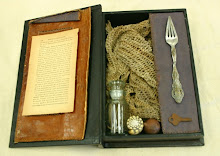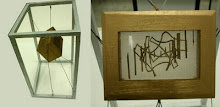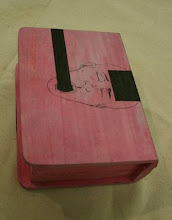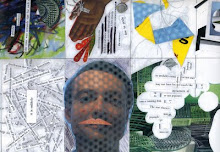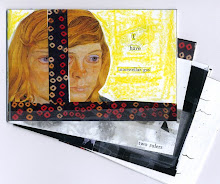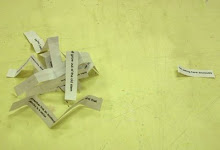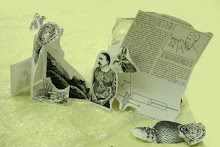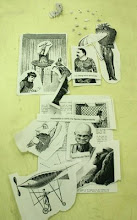In this project students were introduced to the work of poet Marianne Moore and artist Joseph Cornell and asked to look for ways the artifacts they made (poems and boxes, respectively) suggested similarities in theme or practice. The visual art students were then asked to create work that responded to Moore or was Moore-like in some way, and the writing students were to create work that responded to Cornell or was Cornell-like. Here are a few examples:
Ian Koh:
[Made:] Saturday @ 7:30pm – 8:30pm, 28 February 2015
Response to Cornell’s “Solar Set”
Object of Obsession
Scientists exhumes from their deep mental crevice,
Silence leaks sacredness, like a beautiful delicate chalice.
Frantic
but intensely chalked lines and numbers gambit
at inapprehensible magnitude.
Found just over head in clear imaginary ether
So distinctly shining, a tiny crystal,
Like a cartoon mouse hole in a spot
on an infinitely large wall; and a child waits for a clap
and squeak.
Chris Rasmussen:
Kaitlin Lanning:
Lex Aquilina:
Marisa Lainson:
The Last Medici Princess
There are ghosts in the kitchen drawer next to the sink,
mixed with the whisks and the spoons, asleep.
They're hidden under the silverware tray. Above,
slippery waves of moonlight spill through the window
and kiss the countertop blue. A bird sits on the sill and
sings,
"How do you do, How do you do."
The clock chimes two.
I roll marbles in the grout lines of the tile
floor. They scatter and the cat chases after,
following lines that look like telephone wires, a
crucifix covered in shoe prints. I hear our mother
sob and roll three marbles all at once.
They clash and clatter, globs of matter
in motion.
The cat doesn't know where to run.
It'll be three hours yet before the sun comes
up. Voices swim in the rafters like whales
in the ocean, they echo and they spar.
The bird extends her wings and says,
"Goodnight, whoever you are." Our parents
are still fighting, but the dawn is marching
towards our door.
Katie fell from the second floor.
She doesn't play marbles with me anymore.
She lives in the kitchen drawer next to the sink,
sleeping in pearls and a dress. Sisters I never knew
keep her company, likewise clothed in their best--
pendants and curls, their wide eyes unblinking
and blue. They whisper in silence,
"We're waiting for you."
We were the last two.
Adrianna Coe:
Abby Zilka:
My Eye Falls on Cornell's Parrot and Butterfly Habitat
and meets two other eyes,
two other creatures staring out,
plump, perched, complacent, nestled and floating,
they flash against the whitewashed sky. Beneath
wrapped-wirey knotted cloud, breeze trails me to the hatched
and boarded case where drabber beasts of air
toss lightly, wing
to wing, span to span, landing
dusty rooted to the ground, then lift and
rush back up: two old friends.
Safe, contained, I tumble through;
watching them watching others
and again.
Kristen Hatakeda:
Kristin Rasmussen:
Ian Heisler:
Holly Collier:
Kelly McBride:
Mare Insularum:
sea of islands, the southeast range
of moon mountains. A light flickered on
in the old section. I returned in tropic showers,
saw the racehorses and yellow trees at dawn.
In Belmont, they're playing calypso music,
tidal forces against the shores. Night
in the Ibrium Basin, a surface breach,
a flood of lava uprising.
[Text taken from Lunar Orbiter Photographic Atlas of the Near Side of the Moon and Isles of the Caribbean.]
Johanna Hickle:
Sands of Time
Each in turn must scoop his share
From the floor of this desert we call life.
Goblets, hats, cupped hands
Clutching at what we cannot keep.
Sand always discovers the
Cracks in the class
Tears in the cloth
Gaps between the fingers.
A trickling towards
The inevitable conclusion.
Life is not the organized hour glass
But an imperfect vessel--shattered.
Time leaks.
Its loss will end coldly
And yet we linger in each warm grain of the present.
Sand wears down stone and bone alike
But does so
Almost gently.
Jessamy Delling:
















%2Bresponse%2Bto%2BMoore.jpg)























































































